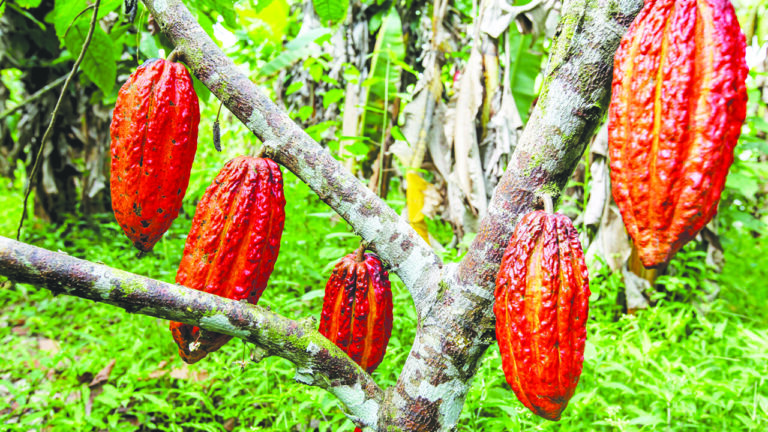Cocoa prices climbed to $8,796 per ton during midweek trading on the U.S. futures market, reflecting growing global demand and tightening supplies. This surge offers a promising outlook for Nigeria, which is looking to reposition cocoa as a cornerstone of its non-oil economy.
A historic global supply shortfall, combined with speculative buying and ongoing U.S. tariffs, has significantly buoyed cocoa prices. Although global inventories are expanding, climate disruptions and tariff uncertainty continue to pose risks to stability in the market.
Nigeria’s Cocoa Ambitions
Currently ranked as the sixth-largest cocoa exporter in the world, Nigeria produced 280,000 metric tons by the end of 2022, increasing output to 340,000 metric tons by early 2024. However, this still trails far behind leaders such as:
-
Ivory Coast: Over 2 million metric tons annually
-
Ghana: 650,000–800,000 metric tons
-
Indonesia: Approximately 739,500 metric tons
To close the gap, Nigeria’s National Cocoa Management Board (NCMB) has set an ambitious goal of boosting production to 500,000 metric tons.
Vice President Kashim Shettima emphasized the government’s strategic pivot towards processing, not just producing cocoa. He noted,
“A ton of cocoa fetches around $9,000, but processed cocoa is worth $30,000—and if turned into chocolate bars, that value could rise to $50,000.”
From Beans to Bars: Processing as a Game Changer
Despite being a top exporter of premium-grade cocoa beans, Nigeria continues to import cocoa powder from neighboring ECOWAS countries. This highlights a gaping hole in its agro-processing capacity. In response, government and industry leaders are advocating for mandatory local chocolate consumption, especially in school feeding programs.
Mufutau Abolarinwa, President of the Cocoa Farmers Association of Nigeria, stressed the need to create a domestic market:
“We need policies that make chocolate part of school diets. That’s how we create demand and scale local processing.”
The government recently approved the establishment of the National Cocoa Management Board (NCMB) to spearhead reforms across the entire cocoa value chain, from production and processing to export.
The Regional Outlook
Nigeria’s resurgence comes as regional competitors face setbacks:
-
Ghana, the world’s second-largest cocoa producer, anticipates a bumper harvest in 2025/2026 after experiencing declining yields due to illegal mining, plant disease, and climate change.
-
Production for the current 2024/2025 season is expected to fall to 590,000 metric tons, well below its 650,000-ton quota.
-
Ivory Coast and Ghana, which jointly produce over half of the world’s cocoa, are both recovering from their worst harvests in decades.
Cocoa as a Catalyst for Economic Diversification
As the government seeks to transition from raw commodity exports to value-added agriculture, cocoa has emerged as a leading candidate. Vice President Shettima reaffirmed this commitment, stating:
“We used to be a global cocoa leader before oil took center stage. Now we are focused on reclaiming that position—not just with cocoa, but across the entire agricultural value chain.”
With rising global demand, surging prices, and an evolving policy environment, Nigeria’s cocoa industry could soon move from the margins back to the mainstream of national development.


